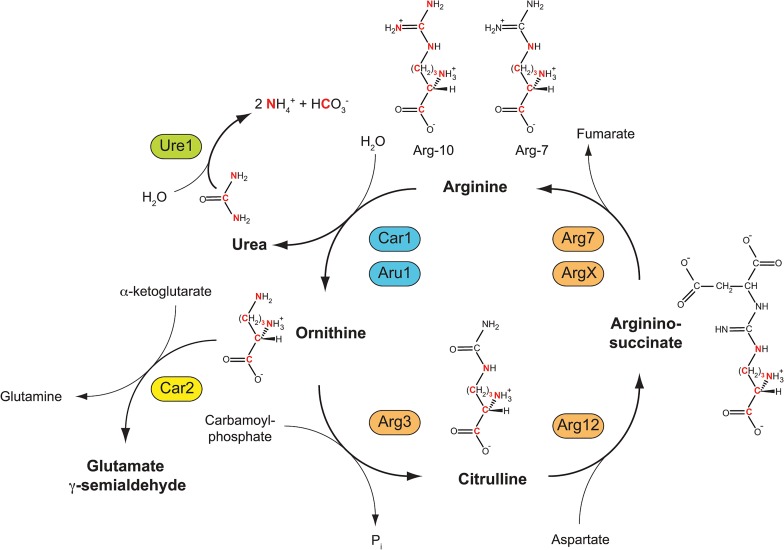Fig 3. Anabolic and catabolic reactions from 13C6 15N4-arginine (Arg-10) leading to formation of “heavy” ammonium and “heavy” bicarbonate, and resynthesis of 13C5 15N2-arginine (Arg-7).
Two S. pombe arginases, Car1 and Aru1, catalyze the conversion of Arg-10 into 13C5 15N2-ornithine (“heavy” ornithine; “heavy” atoms are shown in red). This also produces “heavy” urea, which can be hydrolyzed by urease Ure1 to produce “heavy” ammonia and “heavy” carbon dioxide (shown here as ammonium and bicarbonate ions, respectively), which can subsequently be incorporated into additional amino acids. Ornithine can be converted back into arginine through citrulline and arginino-succinate intermediates, ultimately leading to formation of Arg-7.

